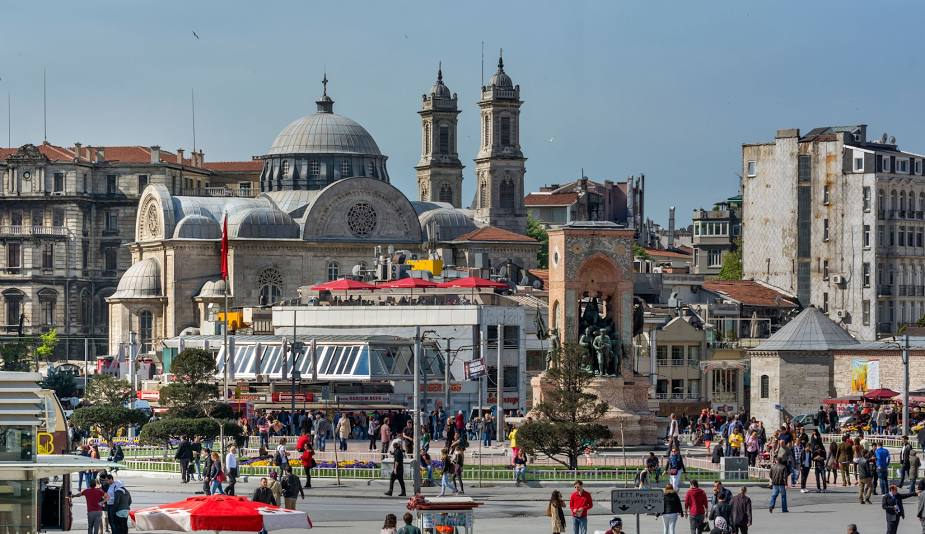The Founding of Constantinople: Istanbul’s Rise as the Roman Empire’s Capital in 330 AD
🏛️ A New Dawn for Byzantion in 330 AD
On May 11, 330 AD, Emperor Constantine the Great reshaped history by proclaiming Istanbul the capital of the Roman Empire. Known then as Byzantion, this small Greek colony was transformed into Constantinople, a grand city destined to become the Second Rome or New Rome. This monumental event, marked by lavish ceremonies, set the stage for a city that would dominate global history for centuries.
Why did Constantine choose this location? Byzantion’s strategic position at the crossroads of Europe and Asia, flanked by the Bosphorus Strait, the Golden Horn, and the Sea of Marmara, made it an ideal hub for trade, defense, and governance. The founding of Constantinople was not just a political shift but the birth of a global powerhouse.
🌍 The Roots of Byzantion
The story of Istanbul begins in the 7th century BC, when Greek settlers from Megara, led by Byzas, founded a colony named Byzantion. Its prime location fueled its growth as a trade center, attracting the attention of Persians, Athenians, and Spartans over the centuries. By the 4th century AD, the Roman Empire was vast but fragmented, and Rome itself was too far from the empire’s eastern borders to serve as an effective capital.
In 324 AD, after unifying the empire, Constantine sought a new administrative center. Byzantion’s natural defenses, maritime access, and proximity to key trade routes made it the perfect candidate. From 326 to 330 AD, the city underwent a massive transformation, emerging as Constantinople—a city rivaling Rome in grandeur.
The Istanbul capital of the Roman Empire was officially born in 330 AD with spectacular festivals, chariot races, and Christian rituals, reflecting Constantine’s vision of a new imperial and religious era.
🕍 Constantinople: The New Rome
Constantinople quickly became the political, cultural, and spiritual heart of the Roman Empire. Often called the Second Rome, it blended Roman traditions with the rising influence of Christianity, which Constantine championed. The city was adorned with iconic structures, including:
- The Hippodrome, a grand arena for chariot races and public events.
- The Senate House, symbolizing Roman governance.
- Christian churches, such as the original Hagia Sophia, marking the city’s religious shift.
This fusion of Roman and Christian ideals laid the foundation for the Byzantine era Istanbul, a civilization that would influence Europe and the Middle East for over a millennium.
🏰 The Byzantine Empire’s Golden Era
After the Roman Empire split in 395 AD, Constantinople became the capital of the Eastern Roman Empire, later known as the Byzantine Empire. Fortified by the formidable Theodosian Walls, the city was nearly impregnable, thriving as a beacon of culture and power.
Under Emperor Justinian I (527–565 AD), Constantinople reached its zenith. The iconic Hagia Sophia, completed in 537 AD, became a global architectural marvel, symbolizing the city’s role as the Istanbul capital of the Roman Empire in the East. Other landmarks, like the Great Palace and the Church of the Holy Apostles, further cemented its status as a cultural epicenter.
The Constantinople history is one of resilience and splendor, with the city serving as a bulwark against invasions and a cradle of art, theology, and law.
⚓ A Global Hub of Trade and Culture
Constantinople’s location made it the ultimate crossroads of continents. As the western terminus of the Silk Road, it connected Europe, Asia, and Africa, channeling goods like silk, spices, and grains through its ports. The city attracted merchants, scholars, and diplomats from across the world, fostering a vibrant multicultural society.
This unique blend of Roman, Greek, and Christian influences made Constantinople a melting pot of ideas, shaping medieval civilization and leaving a lasting mark on global history.
🔱 The Transition to Istanbul
In 1453, after over 1,100 years as the Byzantine capital, Constantinople fell to the Ottoman Sultan Mehmed II, known as Mehmed the Conqueror. The city was renamed Istanbul, inheriting the legacy of Rome and Byzantium while becoming the heart of the Ottoman Empire.
The founding of Constantinople in 330 AD laid the groundwork for this enduring legacy. Istanbul remained a global capital, bridging empires and cultures for centuries.
🧭 A Lasting Historical Legacy
Constantine’s decision to make Istanbul the capital of the Roman Empire reshaped the world. The Byzantine era Istanbul blended Roman governance, Greek culture, and Christian faith, creating a unique civilization. Monuments like the Hagia Sophia, Basilica Cistern, and Theodosian Walls still stand as testaments to this legacy.
Istanbul’s transformation from Byzantion to Constantinople, and later to Istanbul, reflects its role as a bridge between East and West, ancient and modern. Each landmark tells the story of a city that shaped empires and civilizations.
🕊️ Conclusion: The Eternal City
When Constantine declared Istanbul the capital of the Roman Empire in 330 AD, he created a city that would endure as a global capital for nearly 1,700 years. Known as the New Rome, Constantinople became a symbol of cultural fusion, faith, and imperial power.
Today, Istanbul remains a living testament to its storied past—a city where history, culture, and modernity converge. The Constantinople history is not just the story of a city but the saga of human civilization itself.

